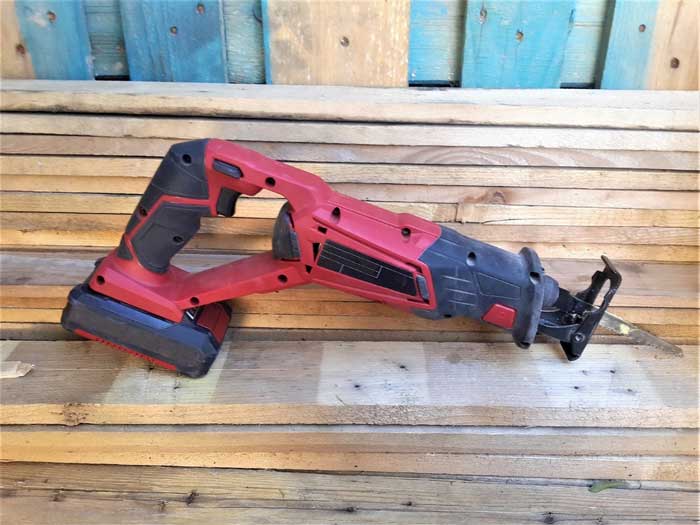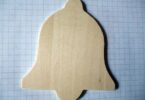The reciprocating saw is a household name among plumbers, electrical and construction workers. It is also called the sabre saw or the sawzall. The reciprocating saw renders the power to its blade to cut through the materials like metal, wood, fiberglass, drywall, ceramics, masonry, composites, and stucco quickly.
Jigsaw (which is not to be confused with a scroll saw) offers more power in cutting curved and straight cuts. It is also very versatile as it can do ripping, crosscuts, plunge, and beveling cutting on different kind of materials such as plastics, woods, light metals, drywall, and ceramic tiles. So, what makes a difference between the two? Let’s see in this article.
Jigsaw vs Reciprocating Saw

Choosing the right saw for your project can be brain-tasking because you need to know the exact saw to use so you will not waste time, money and effort on projects. Most beginners in sawing or cutting do not see the difference between a jigsaw and reciprocating saw, and this has proven to be a dilemma for most.
If you want an accurate curved line, a jigsaw is the best option no matter the kind of material you are working on. Due to its small blade, it is primarily used for tight and finesse type of cuts.
A reciprocating saw, on the other hand, is used for forced cutting through any material. It offers clean and precise cutting, and due to the blade positioning, it is ideal for cutting pipes, framing of windows and other important projects.
1. What’s a Jigsaw?

A jigsaw is a handheld power apparatus with a responding cutting edge opposite to its sharp edge. It is utilized for cutting different materials including plywood, plastic, wood, and even metal to the shape and size required.
The jigsaw is, in some way, a kind of reciprocating saw. Jigsaws utilizes a cutting edge that pushes and dismantles to slice through surfaces. Notwithstanding, there are a couple of key contrasts. Right off the bat, you can cut bends with a jig. That implies with a jig and the correct jigsaw sharp edge you can cut extremely complex shapes, examples, and formats. Furthermore, with a jigsaw, the edge projects downwards from the saw, not straight out like with a reciprocating saw.
2. What’s a Reciprocating Saw?

A reciprocating saw is a powerful cutting tool that is mostly used for applications like demolition, remodeling and renovation jobs; it is also used for pruning plants and trees. It is an uncompromising device with a relatively huge reciprocating sharp edge jutting straight out.
The engine on these saws will convey a ton of capacity to its short, sharp edge to enable it to cut through different materials rapidly. The flat, sharp edge activity on the reciprocating saw will make it a standout amongst the most powerful saws for harsh and forceful cutting.
Jigsaw vs Reciprocating Saw: Uses and Benefits
These machines both have tremendous benefits which cannot be overlooked, in this section of the article the uses and benefits of jigsaw vs reciprocating saw will be outlined.
1. When to Use a Jigsaw?
If you are on a project that requires you to cut flat surfaces or you need to make a precise cut through tough materials, then a jigsaw comes in handy.
- It is used to cut rough edges of tables
- It is used to cut ceramic tiles to the desired shape and size
- It is used to cut artwork and templates
- Jigsaw can be utilized to cut mind-boggling shapes on plastic, wood, compressed wood, and metal sheets.
2. When to Use a Reciprocating Saw?
Reciprocating saws have some specific uses. Since it is terrible at making precise cuts, experts and other non-experts presumably will not discover much use for it. A reciprocating saw is extraordinary for decimation work where the only thing that is in any way relevant is the capacity to slice through materials quickly. In like manner, it is valuable for pipes and electrical workers on account of its ability to quickly slice through areas of plaster, wood, and other materials.
3. Benefits of a Jigsaw
- It can cut complex shapes
- It can cut curves
- It is lightweight.
- It is easy to use.
- It is very versatile.
4. Benefits of a reciprocating saw
- It is used to clear something out
- It is used to cut out and replace pipes in the bathroom
- It is used to get rid of tree branches.
- It is used to fit window frames.
- It is easy to use.
- It cuts through any material.
- It is best for cutting above the head.
- It is ideal for demolitions.
5. Jigsaw vs Reciprocating Saw: Limitations of the Machines
No matter how good a machine is; it has its flaws, and in the contest of reciprocating saw vs jigsaw, it is no different.
Limitations of the Jigsaw
- It cannot be used for flush cuts.
- It cannot cut through hardwood.
Limitations of the Reciprocating Saw
- It is quite heavy compared to a jigsaw
- It cannot make finesse cut.
- Its cuts are quite rough.
Other Factors to Consider
The reciprocating vs jigsaw comparison will not be complete without looking into other factors that affect the choice of machine. These factors include the cost of the machine, maintenance of the machine, the skill set of the operator and most importantly the safety required to operate power saws.
Skills and Safety Required
If you are not so sure about your skills, do not bother using a reciprocating saw, professionals mainly use the reciprocating saw as you may not want to think about the technicality of the blades and the machine itself. Meanwhile, using the jigsaw is safer compared to the reciprocating saw, a complete novice or beginner can still work with a jigsaw to perfect their skill of handling and operating.
The jigsaw or reciprocating saw are both electrical, and they both come in battery-powered and corded.
- Always wear goggles.
- Always wear gloves
- Always wear protective clothing
- Always wear safety shoes
- Always keep children away from work
- Always switch off the machine when it is not in use.
- Do not go beyond the maximum operating
- Do not use the machine when under the influence of alcohol or any strong medication.
Expenses
The prices of these power tools vary from brand to brand, but overall they are quite similar. A good jigsaw can be sold for 200 dollars or lesser. In terms of a reciprocating saw, you cannot spend more than 200 dollars to get an outstanding unit.
Maintenance Requirements
Maintenance requirement for a jigsaw;
- If your jigsaw is corded, make sure to check the power cord condition before usage.
- Do not drop your jigsaw as the alignment of its shoe may be affected.
- Should the jigsaw fall accidentally, check the shoe if the alignment is affected and rectify it using mole grips. If the damage is much more, place the shoe or the jigsaw.
- Lubricate it often to prevent jamming when in use.
- To avoid overheating when in use, keep the ventilation slots free from debris or dust.
- Keep the handle free of oil or grease before and after use.
- Always use a damp cloth and mild soap when cleaning the body of the jigsaw.
- Always keep the blade guide free from dust build-up
Maintenance requirement for a reciprocating saw;
- Make sure the hydraulic fluid is clean all the time.
- It should be clean and protected against corrosion after work is done
- The gear and the tool head must be appropriately greased.
- The connecting parts must be clean before connecting the hydraulic hoses.
So, Jigsaw or Reciprocating Saw?
After all, that is written in this article, you might still ask jigsaw or reciprocating saw, and the answer is quite simple, it depends on how you can work with a reciprocating saw or a jigsaw and the purpose of your project. If you are working on large and heavy materials or you will be doing more of demolitions, it is best to go with a reciprocating saw. But if you are all about finesse, curves, and designs, it is best to work with a jigsaw.
By now you would have known the difference between a jigsaw and reciprocating saw, and if you are still having troubles making a decision, do not worry.
In the contest of reciprocating saw vs jigsaw, having this information above should help you make the right and educated decision for your next project.








